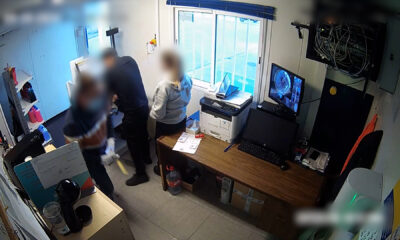

News
Shopping backet increases almost 50 percent in 4 years
A basic shopping basket (made up of oil, rice, coffee, detergent, cookies, milk, pasta and yogurt) has become 47% more expensive in four years, going from costing 20.13 euro to 29.7 euro, according to Kantar Worldpanel, announced during the webinar ‘Building the shopping basket’.
Mayte González, Shopper&Media sector director of Kantar Worldpanel, has pointed out, the circumstances of recent years have changed consumer habits, giving rise to a consumer who goes shopping less often (2.8 times per week on average), which orients its purchase towards the dynamic channel (hypermarkets, supermarket, discount…) to the detriment of the traditional channel (greengrocer, delicatessen…).
Specifically, almost 200 million purchasing acts have been lost and this trend has been driven, in particular, by the transfer that the consumer has made from the traditional channel to the dynamic channel, because this gives the possibility of accessing more references to fill the shopping basket and on fewer occasions. In this way, the shopper visits an average of seven establishments a year, but concentrates 75% of purchases in three of them, more than half in just one.
Price is important but it is not everything
price is only the main reason for purchasing 23% of the time
Inflation has grown by 7.4% in large distribution in 2023, although it has not been the same in all segments, mainly affecting food (11.9%) and beverages (8.9%). To face this price increase, the consumer has opted for the distributor’s own brand products (known as marca del distribuidor, or MDD in Spanish retail circles), also promoted by the retailers themselves.
Specifically, the MDD already accounts for half of the spending in the Spanish shopping basket, with Lidl, Mercadona and Dia, in this order, becoming its main banners, mainly in cosmetics, where it reaches 58%, and in food, with 54%, compared to 46% in 2019.
However, only 10% of the baskets are exclusive to the distributor’s brand, followed by 30% of the manufacturer’s brand. The former are on an upward trend (they accounted for 8% in 2019), the latter are decreasing, but the majority (60%) combine both and determine varied baskets where not everything is price.
And the main motivation for purchasing on the shelf are other characteristics of the product, such as the format, the packaging or the use that is going to be given to that product, something that is decided, in 70% of the cases in at the time of purchase and not at home. In fact, price is only the main reason for purchasing 23% of the time.
As Mayte González has explained, these changes in habits mark the step of distribution and brands, which face the challenge of maximising the penetration of their products in the market by seeking to cover new needs or consumer motivations.
In this sense, Worldpanel’s analysis demonstrates a direct connection between where the categories are located at the point of sale and the shopping basket. Thus, in baskets with more fruit, buyers will be more inclined to include legumes, yogurts or beers; and in those with fresh meat, more salty pastries or grated cheese. Likewise, the small baskets will also hold different products than the large ones.
The importance of promotions
promotions have been present in 34.3% of baskets in 2023
In this scenario, consumers are connecting with promotions and discounts (promotions have been present in 34.3% of baskets in 2023 compared to 33.9% in 2019), many of which arrive through loyalty schemes, which are already present in one in every five purchase acts.
In this sense, while promotions of MDD brands have grown by 27% in the period 2019-2023, those of manufacturer brands have decreased by 11%. Regarding the categories that are showing greater promotional activity, feminine protection and hygiene, baby food and flour, detergents and oil stand out.
However, Kantar Worldpanel data indicates that in many cases a high discount does not succeed among consumers on its own, demonstrating the need for it to be accompanied by other complementary actions so that it resonates with consumers, making communication especially effective directly in the packaging of that discount, which helps increase the penetration of certain products.
“There are already several retailers that announce price reductions in hundreds of their categories. This is part of a strategy that is proving effective, since it associates a certain retailer with a concept of generalised low prices, although then the consumer on the shelf will make their decisions under different motivations that, in many cases, will not be due to the price”, highlighted the Shopper&Media sector director of Kantar Worldpanel.
The post Shopping backet increases almost 50 percent in 4 years appeared first on Spain Today – Breaking Spanish News, Sport, and Information.
-

 News2 weeks ago
News2 weeks agoOlive oil to join zero rate IVA from July
-

 Court News2 weeks ago
Court News2 weeks agoFour years in prison for hitting woman who didn´t want to have sex without a condom
-

 Health2 weeks ago
Health2 weeks agoImprove Your Quality of Life: Discover How Robotic Surgery for Prostate Cancer Works and Its Benefits
-

 News2 weeks ago
News2 weeks agoThe number of international air passengers grows by 13% and reaches 10 million in May




















